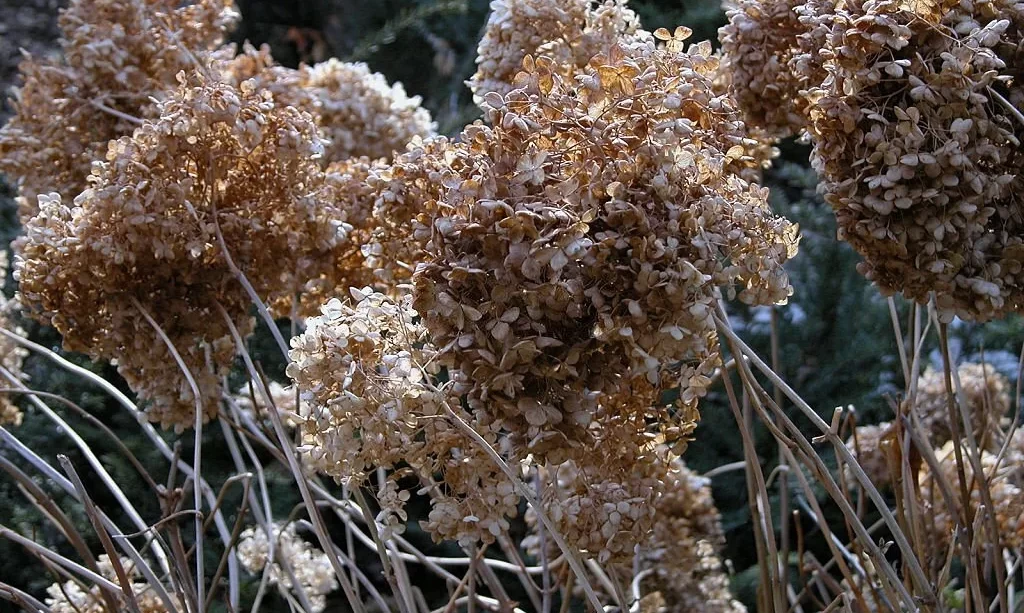For avid gardeners, the changing seasons bring a mix of anticipation and concern, especially when it comes to perennial favorites like hydrangeas. As winter sets in, and the vibrant blooms of these ornamental shrubs fade away, it’s not uncommon to wonder, “Is my hydrangea dead or just dormant?” This article aims to unravel the mystery, guiding you through the subtle cues that distinguish a hydrangea in dormancy from one facing potential trouble. Understanding these signs is key to providing the right care and ensuring the health of your cherished hydrangea plants.
Signs of Dormancy
Hydrangeas, like many plants, undergo a natural cycle of dormancy, a period of rest and rejuvenation. Recognizing the signs of dormancy is crucial for distinguishing it from more concerning issues. Look for the telltale signs such as leaf drop, reduced growth, and a general withdrawal of energy. Understanding that these changes are part of the seasonal ebb and flow allows you to appreciate the resilience of your hydrangea as it prepares for a vibrant return in the upcoming growing season.
Signs of Potential Trouble
While dormancy is a normal phase, there are signs that might signal potential trouble for your hydrangea. Wilting that doesn’t respond to watering, unusual discoloration, or a lack of new growth can be red flags. These signs may indicate underlying issues that require attention. As we delve into these indicators, you’ll gain insights into distinguishing between the expected pauses in growth and signs that your hydrangea might need a helping hand to thrive once again.
Seasonal Changes and Varieties
Understanding seasonal changes and the unique characteristics of different hydrangea varieties is crucial for accurately gauging the health of your plant. Hydrangeas, depending on the variety, may exhibit distinct seasonal variations in appearance. Some may naturally shed leaves, while others retain foliage throughout the winter. Familiarizing yourself with the specific traits of your hydrangea variety will help you differentiate between normal seasonal changes and potential issues. Environmental factors, such as temperature and sunlight, also play a role in how hydrangeas respond to the changing seasons. By considering these elements, you can better interpret the signals your hydrangea is sending about its current state.
Assessment Techniques
When in doubt about the condition of your hydrangea, employing effective assessment techniques can provide valuable insights. Inspecting the stems for signs of life, such as pliability or brittleness, is a practical approach. The scratch test—gently scraping the bark to reveal the layer beneath—can also offer clues about the plant’s vitality. Additionally, observing the overall appearance of the hydrangea and noting any unusual changes in color or texture can guide your assessment. Armed with these techniques, you can confidently determine whether your hydrangea is in a state of dormancy or if intervention is needed to address potential issues.
Reviving Strategies
If your hydrangea shows signs of distress, implementing strategic revival efforts can breathe new life into the plant. Begin by adjusting soil conditions, ensuring proper drainage, and providing a suitable balance of nutrients. Pruning away dead or damaged stems encourages new growth and rejuvenates the plant. Consider conducting a soil test to identify any deficiencies or imbalances, addressing them with targeted amendments. Adequate watering, especially during dry spells, is crucial for hydrangeas on the path to recovery. Should these efforts prove insufficient, seeking professional advice becomes a viable option, as expert intervention may uncover hidden issues and offer tailored solutions for your hydrangea’s specific needs.
Conclusion
In the delicate dance between dormancy and potential trouble, deciphering the signals your hydrangea sends is essential for effective care. This article has explored the nuances of seasonal changes, varieties, and assessment techniques to help you make informed decisions about the health of your hydrangea. Whether it’s embracing the natural rhythm of dormancy or implementing revival strategies, your attentiveness as a gardener plays a pivotal role. With a keen eye and a proactive approach, you can navigate the complexities of hydrangea care, ensuring these beautiful blooms grace your garden with vitality and color season after season.



